Retro Replay Review
Gameplay
Stalker 1: Path of Fire delivers a fast-paced platforming experience that keeps players on their toes from the first radioactive step. You guide your Stalker through a series of contaminated zones, each teeming with mutated creatures and environmental hazards. The core loop revolves around traversing dangerous terrain, dispatching foes, and collecting valuable artifacts to earn enough points to unlock the next “exit zone.” This simple yet addictive formula ensures that every run feels fresh, as map layouts and enemy placements can vary slightly, encouraging careful exploration and quick reflexes.
Combat in Path of Fire relies on a straightforward yet satisfying system. Your Stalker is equipped with a basic weapon that can be upgraded by finding rare power cells scattered throughout the levels. As you progress, these upgrades add elemental effects—fire, shock or corrosion—that not only spice up your attacks but also create dynamic interactions with the environment, such as igniting pools of radioactive sludge to clear paths. The balance between offense and evasion shines when you face swarms of mutated rodents or lumbering, irradiated plant creatures; timing your shots and jumps becomes crucial to survival.
Platforming challenges are another highlight. Radiation zones are marked by glowing green pools or clouds of toxic vapor, and stepping into them without proper protection saps your health rapidly. You’ll need to leap across crumbling ledges, swing from vine-like cables, and duck under collapsing beams. The game’s checkpoints are fairly generous, but dying in a high-stakes section can still sting, especially if you were close to the exit zone. Overall, the blend of action and platforming is both tense and rewarding, offering a satisfying difficulty curve for newcomers and veterans alike.
Graphics
Visually, Stalker 1: Path of Fire adopts a gritty, hand-painted aesthetic that evokes the bleakness of a post-nuclear wasteland. The color palette is dominated by muted greens, browns, and rusted oranges, punctuated by the eerie glow of radioactive hazards. This choice not only reinforces the theme of contamination but also helps important elements—like safe platforms and enemy weak points—stand out against the drab backdrop. Animated details, such as flickering Geiger counters and drifting ash particles, add layers of atmosphere without overwhelming the player.
The character and creature designs deserve special mention. Your Stalker moves with a fluid animation set that conveys weight and urgency, making each jump and roll feel substantial. The mutants range from scurrying, insectoid pests to hulking brutes with exposed bone and glowing veins. These models are rendered with enough detail to be menacing, yet stylized just enough to avoid venturing into grotesque territory. It’s a delicate balance that the developers pull off admirably, creating a world that’s unsettling yet still accessible.
Environmental variety is another strong point of the visual design. While the overarching aesthetic remains consistently bleak, each zone has distinguishing features—an overgrown reactor core with pulsating walls, a flooded underground tunnel illuminated by phosphorescent algae, and collapsed industrial platforms tilted precariously over chasms. These shifts in scenery keep the experience visually engaging and give you new obstacles to learn and conquer. Even on mid-range hardware, the game runs smoothly, with stable frame rates and minimal load times between areas.
Story
At its heart, Path of Fire offers a minimalist narrative that complements its gameplay rather than overshadowing it. You play as one of the so-called “Stalkers,” scavengers who risk their lives to delve into the irradiated zones in search of artifacts, food, and rumored sources of clean water. Story beats are delivered through brief text logs and environmental cues—rusted signage pointing to abandoned bunkers, audio snippets of frantic scientists, and graffiti left by those who didn’t make it out. This world-building approach lets you fill in the blanks with your own imagination, heightening the sense of mystery and dread.
The narrative arc becomes more personal as you collect notes from previous explorers. These journal entries paint a picture of desperation and fleeting hope—scientists scrambling to contain radiation, soldiers deserting their posts, and families torn apart by the fallout. While there’s no verbose cutscene or voiced protagonist, the emotional weight comes through in the details. You begin to care about the fate of these lost souls and your own character’s possible future. It’s a sparse yet effective way to convey stakes without interrupting the flow of gameplay.
Subplots emerge organically as you uncover hidden caches and secret passages. One moment you might be chasing a mechanical drone carrying critical data, and the next you’re discovering a hidden laboratory where a lone researcher attempted to reverse the mutations. These vignettes add layers to the central theme of survival versus sacrifice, making each collectible feel like a piece of a larger puzzle. The story’s pacing aligns nicely with gameplay progression, ensuring that narrative reveals coincide with rising challenges.
Overall Experience
Stalker 1: Path of Fire is a compelling blend of action, platforming, and exploration that achieves more with less. Its tight controls and inventive level design create a sense of momentum that’s hard to put down. Each zone feels like a self-contained puzzle, testing your reflexes, resourcefulness, and willingness to adapt to ever-changing dangers. The gradual unlock of weapon upgrades and environmental hazards keeps the gameplay loop fresh throughout its roughly six- to eight-hour runtime.
While the game doesn’t revolutionize the platformer genre, it refines familiar mechanics with a distinctive radioactive twist. The art direction and sound design work in harmony to immerse you in a world on the brink of ecological collapse. Whether you’re skirting around glowing pools, fending off mutant scorpions, or unearthing a pivotal data log, the tension remains high and the stakes feel real. It’s a testament to focused indie development, delivering polish and personality without unnecessary bloat.
For players seeking a challenging yet fair experience, Stalker 1: Path of Fire stands out as a must-try. Its combination of strategic combat, precision jumping, and atmospheric storytelling makes it more than just another platformer. Even if you’re wary of post-apocalyptic settings or tough gameplay, the game’s accessible difficulty options and gradual ramp-up ensure you can find your preferred pace. Overall, it’s a memorable journey through a contaminated world, one that will linger in your imagination long after the credits roll.
 Retro Replay Retro Replay gaming reviews, news, emulation, geek stuff and more!
Retro Replay Retro Replay gaming reviews, news, emulation, geek stuff and more!
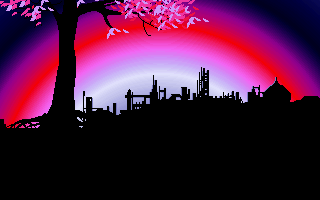
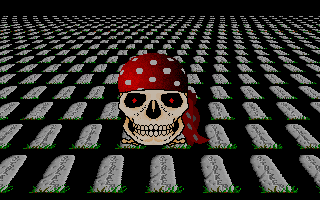
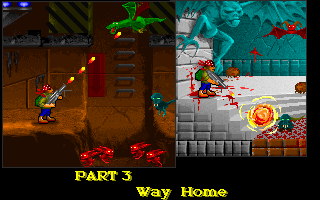
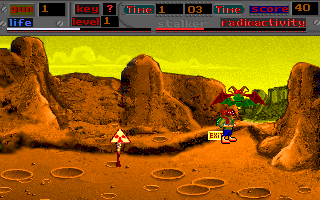
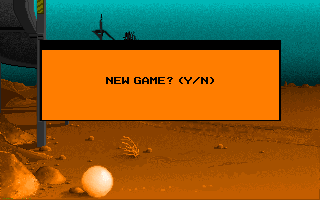



Reviews
There are no reviews yet.